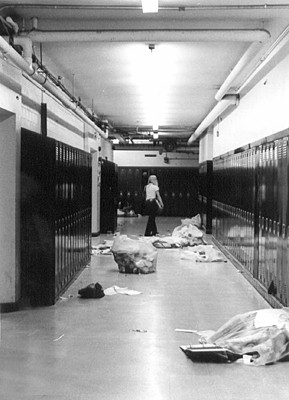All Nonfiction
- Bullying
- Books
- Academic
- Author Interviews
- Celebrity interviews
- College Articles
- College Essays
- Educator of the Year
- Heroes
- Interviews
- Memoir
- Personal Experience
- Sports
- Travel & Culture
All Opinions
- Bullying
- Current Events / Politics
- Discrimination
- Drugs / Alcohol / Smoking
- Entertainment / Celebrities
- Environment
- Love / Relationships
- Movies / Music / TV
- Pop Culture / Trends
- School / College
- Social Issues / Civics
- Spirituality / Religion
- Sports / Hobbies
All Hot Topics
- Bullying
- Community Service
- Environment
- Health
- Letters to the Editor
- Pride & Prejudice
- What Matters
- Back
Summer Guide
- Program Links
- Program Reviews
- Back
College Guide
- College Links
- College Reviews
- College Essays
- College Articles
- Back
School Lunches and Obesity
“But when our kids spend so much of their time each day in school, and when many children get up to half their daily calories from school meals, it’s clear that we as a nation have a responsibility to meet as well,” stated Michelle Obama about our school lunches. CBS reported an article called Congress Eases First Lady’s School Lunch Guidelines posted on December 10, 2014 about our new school lunch guidelines and quoted Michelle Obama saying that she would fight “to the bitter end”to make sure kids have good nutrition in schools. However, our new school lunch guidelines may not be helping as much as we think. Child obesity is becoming a major problem in this generation and with plate waste increasing, student participation decreasing, and students eating whatever they want after school, changing our school lunches may only be making a fraction of improvement.
According to The Huffington Post, children are considered obese when their body mass index, a measure of weight in relation to height, exceeds that of 95% of their peers of the same age and sex. From 1974 to 2004, the obesity rate of school-aged kids jumped from 4% to 18.8%. A study from Dr. Josh Axe’s article called Child Obesity and School Lunches, the article on draxe.com, showed that students who ate school lunches were 29% more likely to be obese compared to students who brought lunches from home. Many schools are experiencing many new changes involving their school lunches.
Many of the changes involve raises in the cost of items. 81.8% of schools saw cost increases for the food they now have to buy to fit the new school lunch regulations. New equipment and food storage are another factor in raising the costs for schools across the country. According to stateofobesity.org, 88% of schools needed one or more new pieces of equipment for the new standards. Other than the increase in school spending, one of the largest issues is the amount of plate waste due to the new standards. It’s great seeing people take action into stopping child obesity but it may be causing more problems than it is helping.
The National School Boards Association found that 83.7% of school districts across the country have seen an increased amount of school lunch food waste since 2010. Stateofobesity.org stated that 31 million students eat school lunches and 12.5 million students eat school breakfast everyday yet many schools are seeing a decline in student participation. 76.5% of schools reported that they have noticed a drop in students buying school lunches. If kids aren’t eating the lunches they are given now than what are they eating?
Many students may go to a al carte or buy something at a vending machine. Others may wait until they get home but once they do, they don’t have any guidelines to follow. They can eat whatever they want and portions today just keep growing. Chocolate bars today are 1,233% larger than they were in the early 1900s. Fast food is also growing drastically according to Dr.Axe. A pop that used to be 7oz is now 42oz, a hamburger that was 3.9oz raised to 12 oz, and an order of fries that used to be 2.4oz is now on average 6.7oz.
According to Michelle Obama, changing our school lunches is helping for the better and will keep improving with time. But plate waste keeps increasing, student participation keeps decreasing and schools are having to pay more money. Now lets think if this is really the best thing for our schools?

Similar Articles
JOIN THE DISCUSSION
This article has 0 comments.
